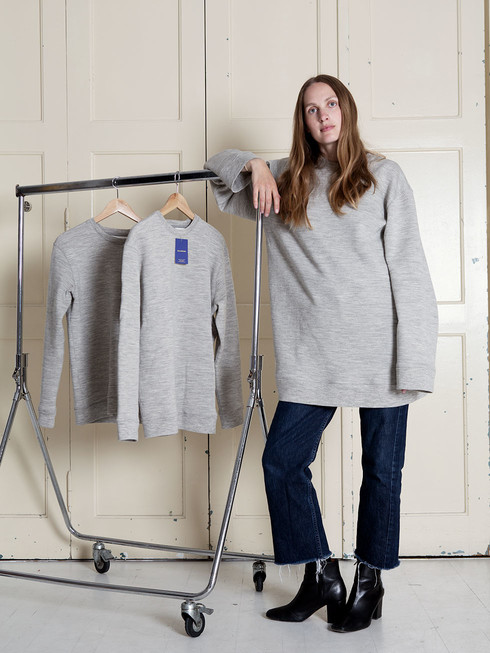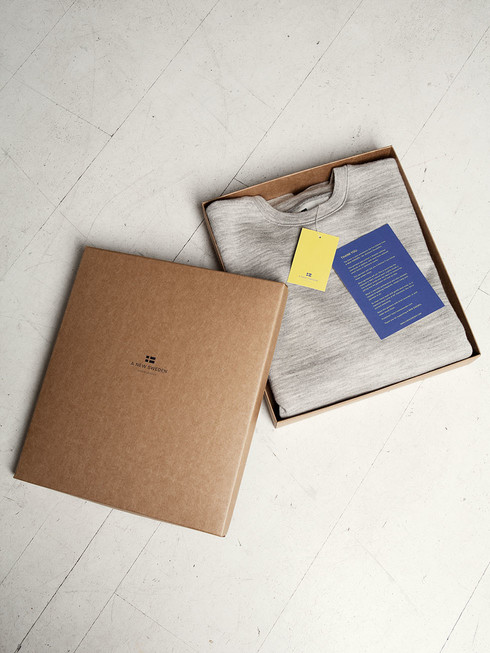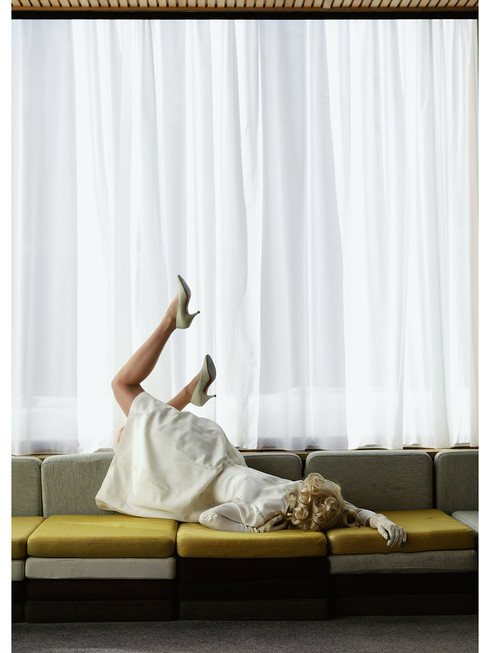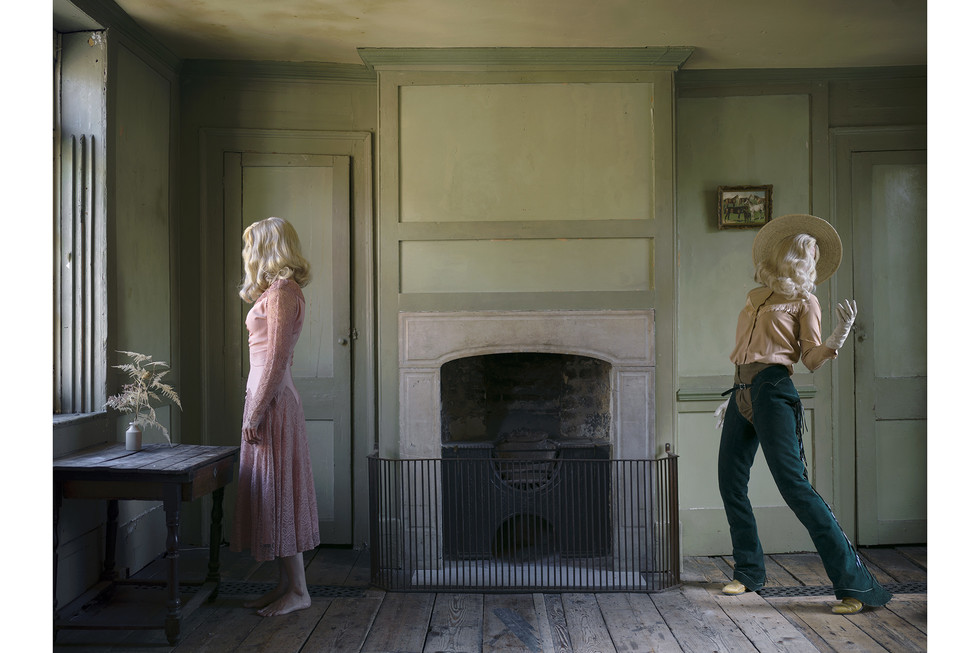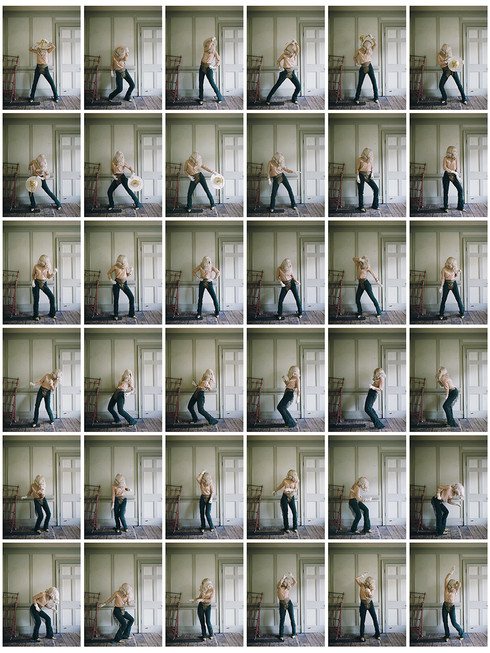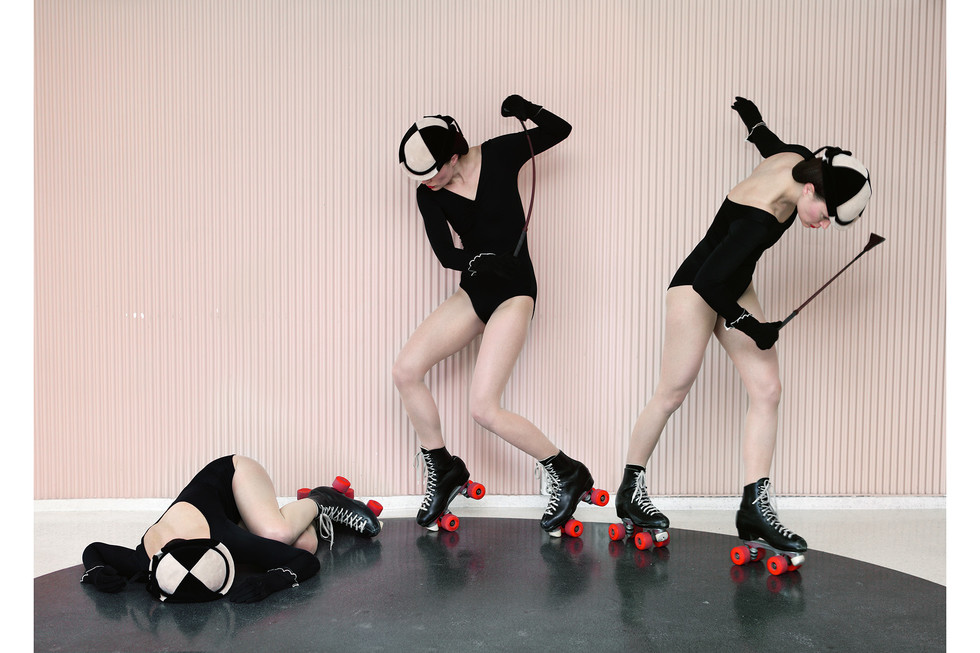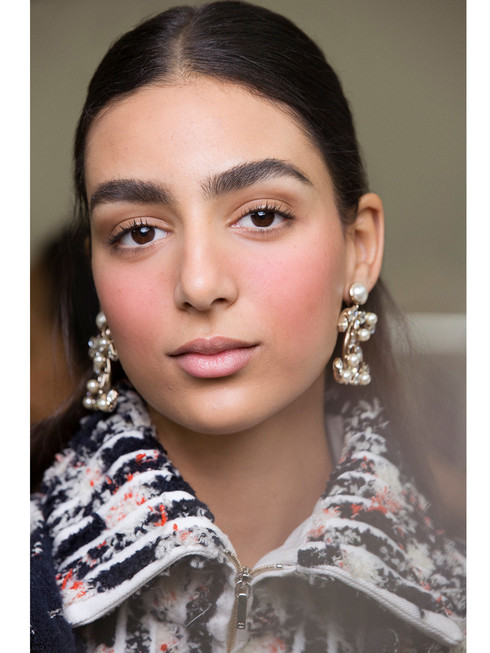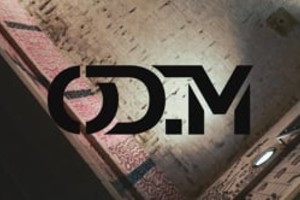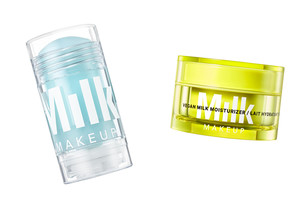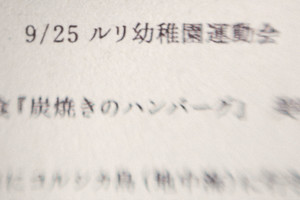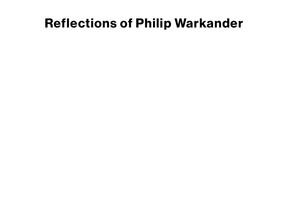From Couture Paris to sustainable A New Sweden
Written by Mari Florer by pariThe Swedish fashion designer Lisa Bergstrand grew tired of the environmental damage the textile industry causes our planet. After several years working within the business, from high end Céline and Saint Laurent to start up brands, she moved from Paris back to Sweden, determined to show the colleagues that it’s possible to produce clothes more locally.
Today, she has started A New Sweden - her own sustainable brand with a full insight in every step of the production. Her first design is a unisex sweatshirt which is made from 100% Swedish wool.
At the moment, Lisa Bergstrand and her family are living in Berlin. Her husband is there for work, and her for her own project A New Sweden, that can be done from anywhere most of the time, she explains. She also works as a sustainable fashion and design consultant for different companies and projects around Europe.
When I meet Lisa Bergstrand in our studio here in Stockholm, she is surprised that I speak Swedish.
“I thought you were American. You have been writing to me in english.”
I smile. She smiles.
She has that face that looks gorgeous when she is happy, but when she is serious, her look is a force to be reckoned with. Her versatile facial expressions look great in front of the camera and we got an excellent portrait of her.
Q: What’s the best thing happening in your life right now?
A: I’m happy that people are talking about how important my work is. There is also a lot of interest from people in Sweden wanting to do similar things, and various people who are working at other Swedish fashion labels have said that A New Sweden is inspirational.
Q: Why did you move back to Sweden?
A: My company is based outside of Piteå, but I am not living there full time. I moved back to Sweden from Paris cause I believed that Sweden was more advanced in its way of thinking and acting sustainable. Unfortunately, I was very disappointed once I arrived. In Sweden there is a lot of talk but not so much action. France managed to ban plastic shopping bags almost two years ago, while in Sweden we still have them in shops.
Q: Why didn’t you collaborate with any of the other brands in Sweden instead of starting your own company?
A: For me it was difficult to live up to my ideals of what sustainability was, without challenging the existing fashion business model. Most of the brands in Sweden, at the moment, have a traditional way of planning, designing, manufacturing and selling their collections. I think that this model needs to be updated. A New Sweden is not just about trying to find a better way to make the garments, but trying to find a business model that enables a brand to not create waste.
Q: In what moment did you decide to start A New Sweden?
A: It was when I moved back to Sweden and I saw that there need to be some options to the clothing offered on the market. I had taken some courses on sustainability and the more I learned, the more I thought about moving away from the fashion industry. It’s an industry that is considered to be the second biggest polluter after oil, but yet there was little talk about this a couple of years ago. People happily filled up their wardrobes with cheap plastic clothing without reflecting on it.
After giving it a lot of thought, I decided that instead of changing jobs away from this pollution industry, I should try to make it better. After all, I had more than ten years of experience of working in fashion. I asked myself how to make a garment that I believed was actually made in a good way. And I decided that it was to use locally grown natural materials and have every step of the production as locally as possible. As I started to investigate the different options of materials, I also learnt more about wool. I found out that only 18% of all Swedish wool were being used. And that wool is an amazing material that is very versatile. We actual have sheep in Sweden that has all kinds of different wool qualities. Wool does not need to be shipped from Australia or South America for be soft and have an excellent quality.
Q: Is it difficult to produce garments in Sweden nowadays, when all the textile machines have been sold abroad and most of our genuine knowledge has died out?
A: It has been very challenging to find the few producers that are still left in Sweden. The spinning of the yarn had to be made in Italy, because in Sweden there are no machines to produce a yarn that thin. We used to have a very rich textile industry but all that is left now is mainly the design offices. It is amazing in a way that such a small country has so many fashion companies, but all the production is thousands of miles away.
However the knowledge is still there. After a lot of research I managed to find some great factories, and have met many passionate people at all stages in the production process who are trying to keep manufacturing in Sweden alive. From the farmers who want their wool to be used, to manufacturers who are paying fair wages, to people who are trying to restart old mills. So hopefully A New Sweden can inspire and show people that it is possible for Sweden to once again be proud of its garment industry.
Q: Do you think it’s possible to start a local Swedish textile production again?
A: I definitely think that it is both possible and necessary to start producing textile more locally. I think the way technology has advanced, a lot of machines that used to require lots of manpower, can now be controlled by computers. And the main reason that factories moved was the high cost of labour in Sweden.
More and more people are also starting to think more about the environment. Even though we are very far away from changing our shopping behaviour, I do hope that more people will start to think about what they are wearing and where it has been made. There is also a trend of knowing the story behind the things you buy, and an interest for real craftsmanship.
Q: What has been most difficult on your journey starting a sustainable fashion brand?
A: It’s not difficult to start a fashion brand with existing supply chains, but existing supply chains aren’t engineered to deliver sustainable garments in a way that lives up to our standards. Therefore, we have had to build up our own supply chain and find all components along the way. In a way, the most difficult part has been trying to live up to our own ideals of what sustainability is. Meaning not using plastics or chemicals, and making all our garments completely biodegradable.
For example, to find a sewing thread that is not made of polyester or made in China, took weeks to find. Which is crazy, cause all garments are sewn together with thread. But I guess most companies unfortunately use polyester.
Q: Do you believe that the ethical and sustainable trend is here to stay?
A: I hope it’s not a trend! It has to become our way of being. Unfortunately I think that the word sustainable is being used in very misleading ways. Many companies use it to make themselves and their costumers feel better about producing and consuming new clothes. We might need to use a new word to create a bigger meaning. “Accountable” is a word that my partner use.
Q: What defines a sustainable textile material?
A: It should require minimal resources to produce. It should leave as little trace as possible on the environment during the course of its production, use, and end of natural life.
However, sustainability isn’t just about the textile materials and where they are produced. It is just as important when it comes to our attitude to clothing in general. It doesn’t matter if we have the most sustainable textile materials, if we still buy garments with the intent of only wearing it a handful of times before putting it in the good will bin.
Q: And what future materials are most sustainable?
A: I think recycled natural materials will be the most sustainable in the future. There might also be new ways of making natural materials that can be made without too much chemicals or energy. Growing natural materials, such as organic cotton, is better than cotton with pesticides, but cotton still requires a lot of water. And it is not sustainable in the scale that it is being produced today, and at the expense of land that could otherwise be used for forests.
Same goes for materials made from cellulose such as Lyocell / Tencel or Bamboo. Not only are they now a part of the cause of the worlds deforestation, they also use enormously amounts of chemicals in first steps of the process.
Materials made from recycled plastic can only be sustainable if their owners are aware of how to wash them and use something that can trap the microfibres. But, even then I’m not sure it’s possible to stop the micro plastic pollution. All manufacturers should have a bigger responsibility to take back the garments they have produced at the end of their natural lives, otherwise they still end up in landfills.
Q: I read that earning money wasn’t that important to you. How do you manage to finance this startup?
A: A New Sweden is largely self-funded, but we have some investors who believe in what we are trying to do. I did not start this company because I wanted to make money. I started it cause I believe that it is necessary to change the way we produce and consume clothing. It’s not that earning money isn’t important - it is, especially if we want A New Sweden to continue.
We don’t have the ambition to grow exponentially like other fashion brands. At our core is the belief that the need for growth is one of the least sustainable aspects of any business. The question to any brand that adds a “conscious” or “sustainable” line is, how many non-conscious, or unsustainable lines did you remove to make things in a better way? We don’t just need to produce better, we also need to produce less, and that means understanding what growth should mean to a sustainable business.
Q: Do you have other ideas you want to realize?
A: A lot of ideas! They mainly involve using Swedish wool in different ways.
I am also working on a project to create a high end European trade show that will make it easier for companies to find local material and manufacture.
Q: Which of all timeless garments is your favorite?
A: I really love the trenchcoat. Its history and also its shape and details. I hope that one of our editions can be a wool trench coat.
Q: You have worked with Celiné, Givenchy and Saint Laurent. Which of these brand do you like most - from an aesthetic perspective?
A: I liked what Phoebe Philo did at Celiné. I think it’s something special with a woman designing for women. Now Celiné has turned into old Saint Laurent in a way. But, I also liked working with Hedi Slimane at Saint Laurent. He has a very strong creative vision that also is incredibly successful commercially. And his way of perfecting already classic pieces has taught me a lot.
Q: What sustainable brands do you wear except your own?
A: I wear a lot of vintage and try to not buy new things. I don’t always agree that what other brands call sustainable actually is sustainable.
Q: In the end, what needs to be done to get people changing their consumption behavior?
A: Maybe a Greta Thunberg in fashion? Or that the younger generation is more aware. I think knowledge is the key. We are learning things about our environment every day. If people knew that polyester is a type of plastic made from oil, and there are thousands of dangerous chemicals in the productions of it. And that it releases thousands of microplastics when washed. Hopefully, less people would buy it. And there has to be an alternative offered.
Q: In a sustainable world, it would be better if the market is close to production. Are you going to export outside Sweden?
A: The idea is to focus on Scandinavia and Europe first. It’s good to stay locally to avoid transportation, but it’s also good if the message reach more people then just in Sweden. One of the ambitions of A New Sweden is to create a framework that allows our model to be open-sourced and reapplied in other places, so one day there could be A New France, or A New Britain, but we still have a very long way to go.

